DataWeave can be used in Mule to transform message payloads. The Transform Message element allows writing DataWeave code to take the incoming message and produce an output. The editor provides input/output previews and auto-completion. DataWeave expressions can also be used elsewhere in Mule flows using the dw() function.
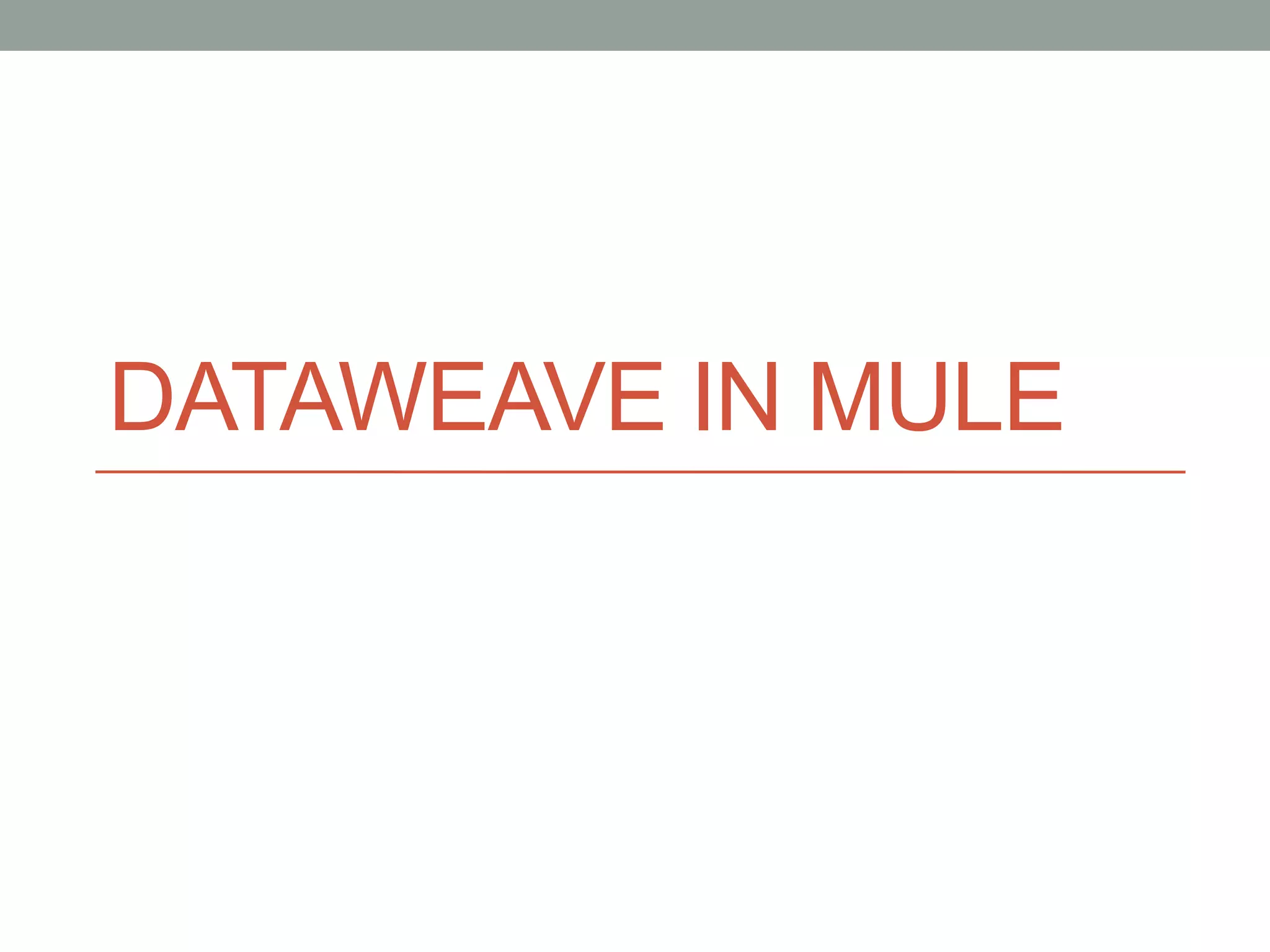
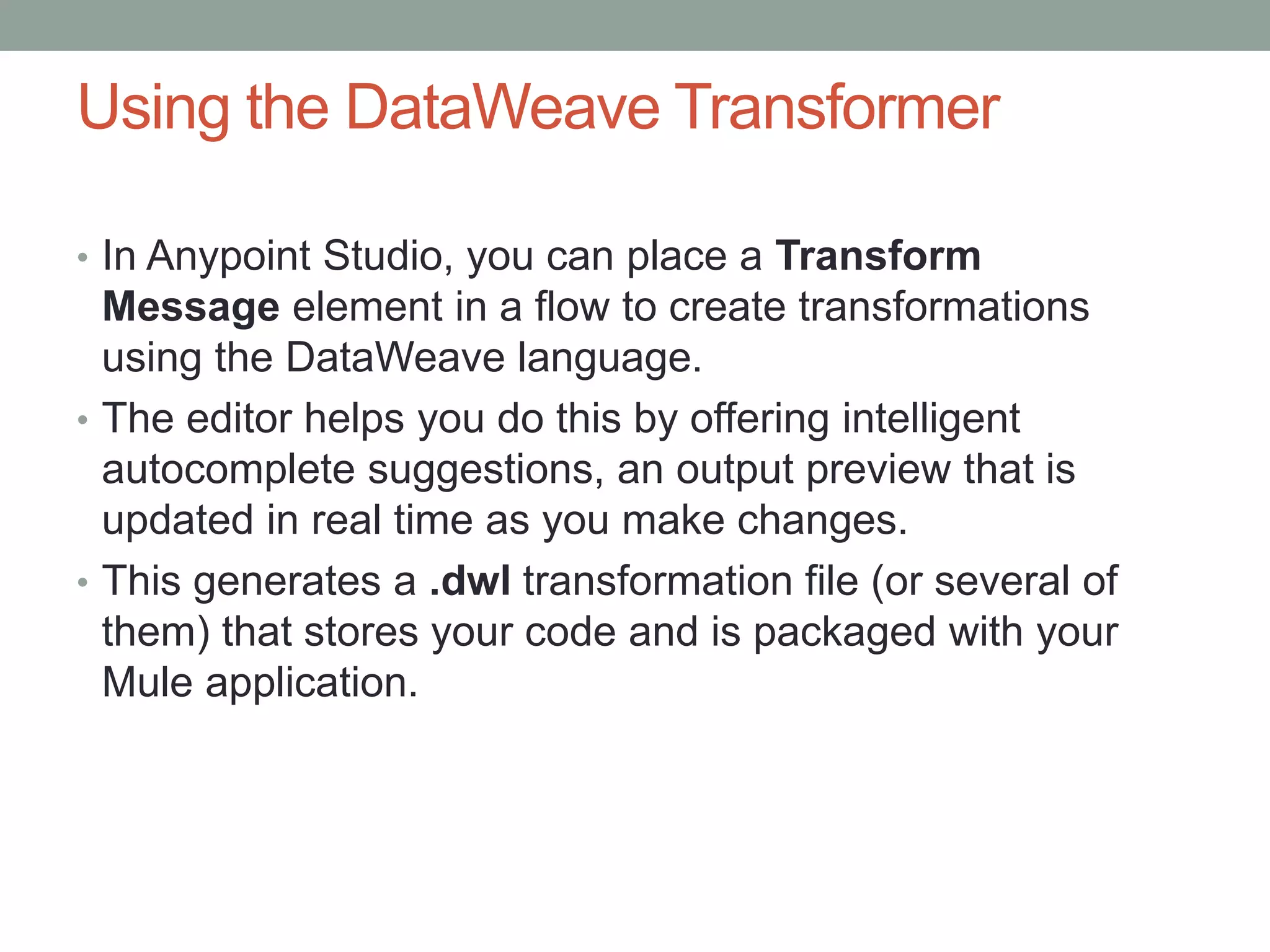
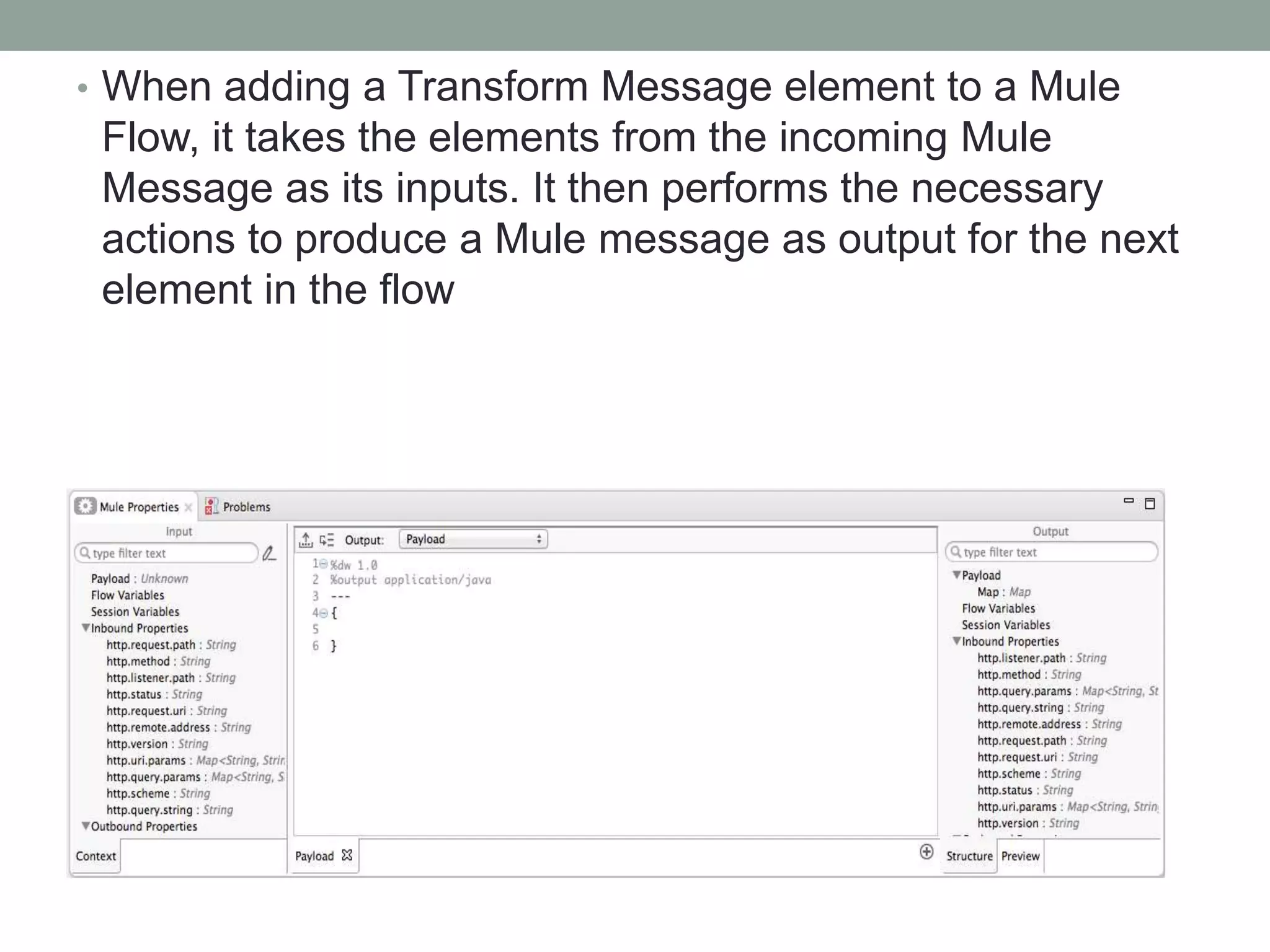

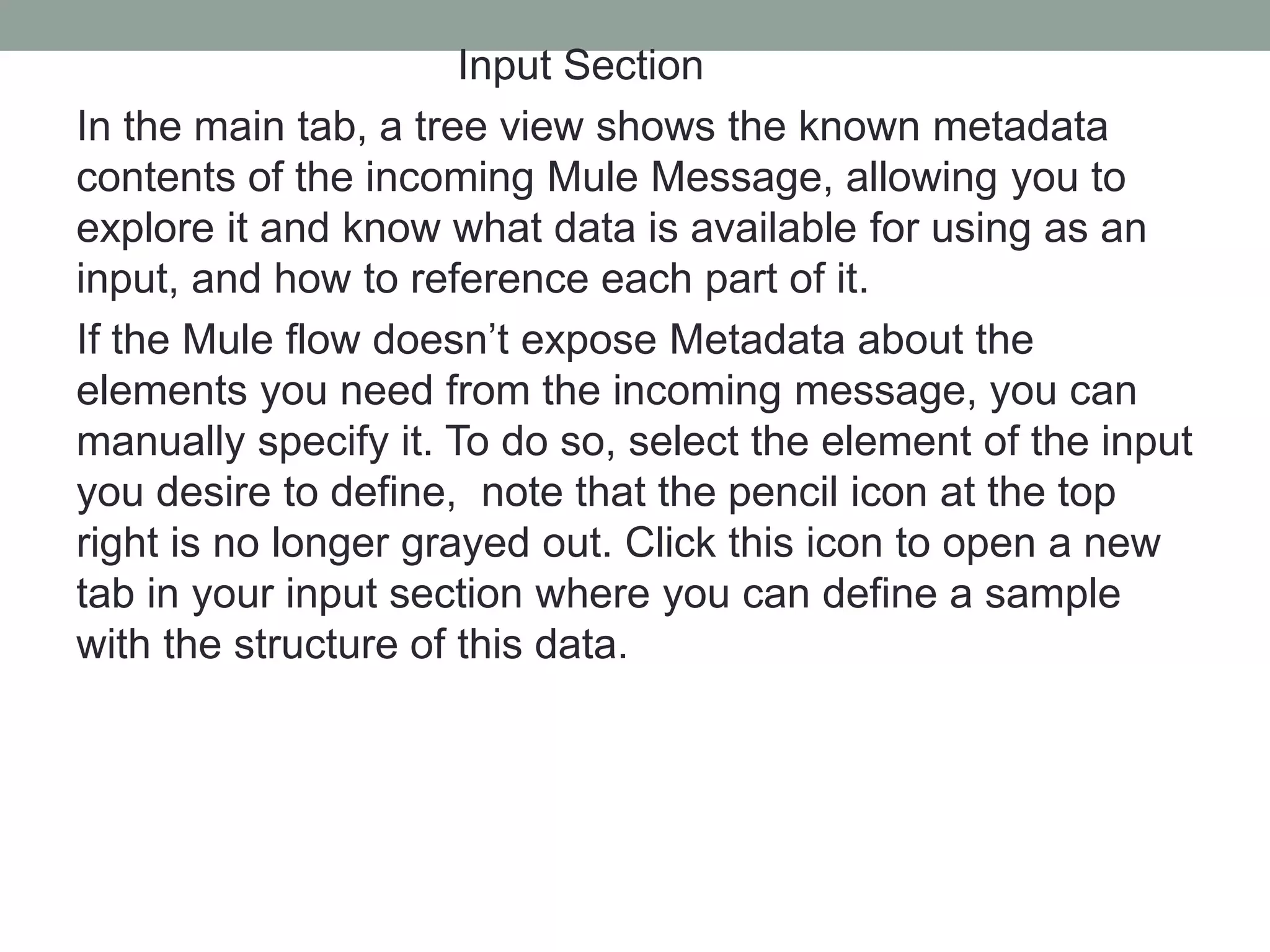
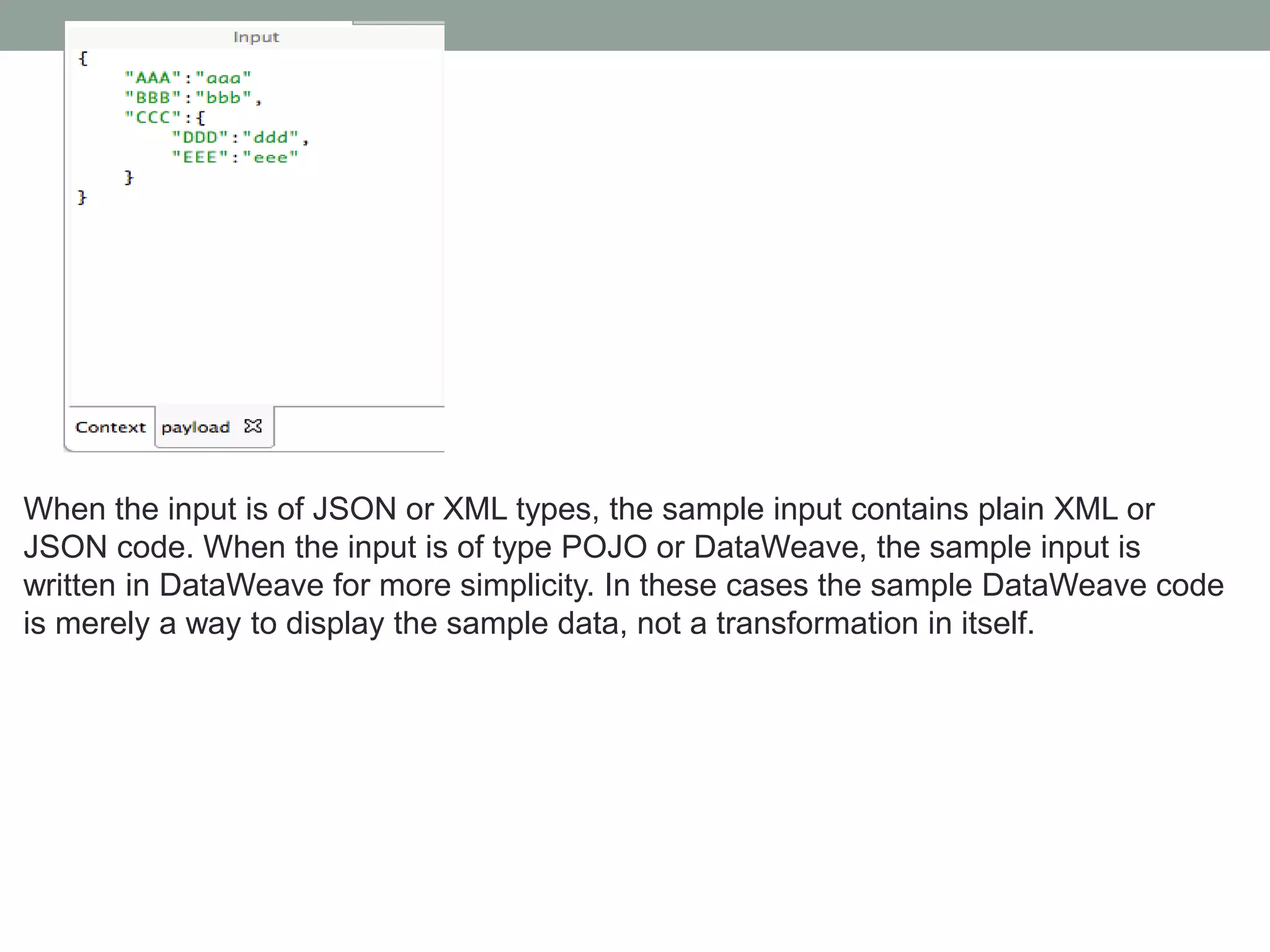
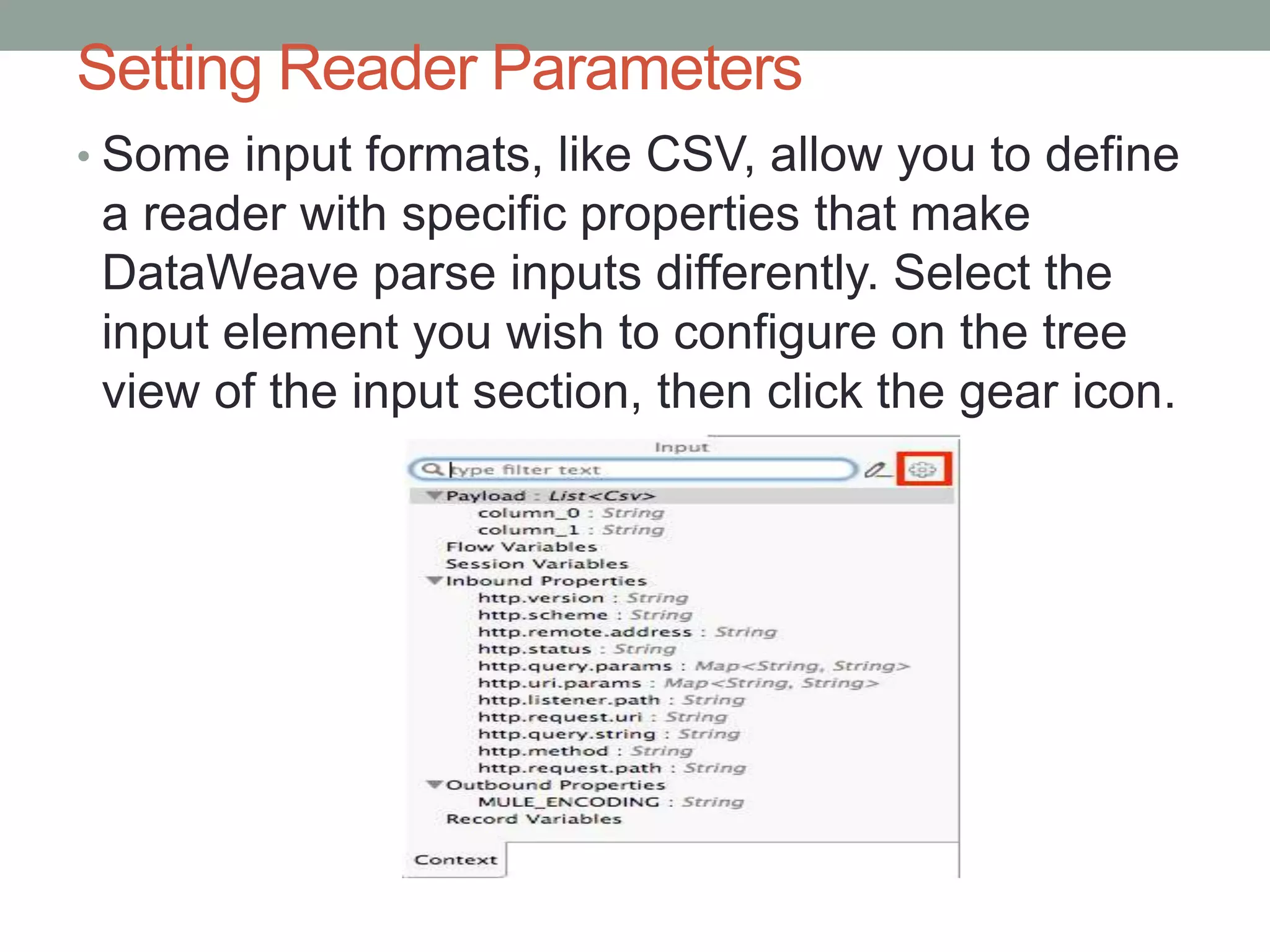
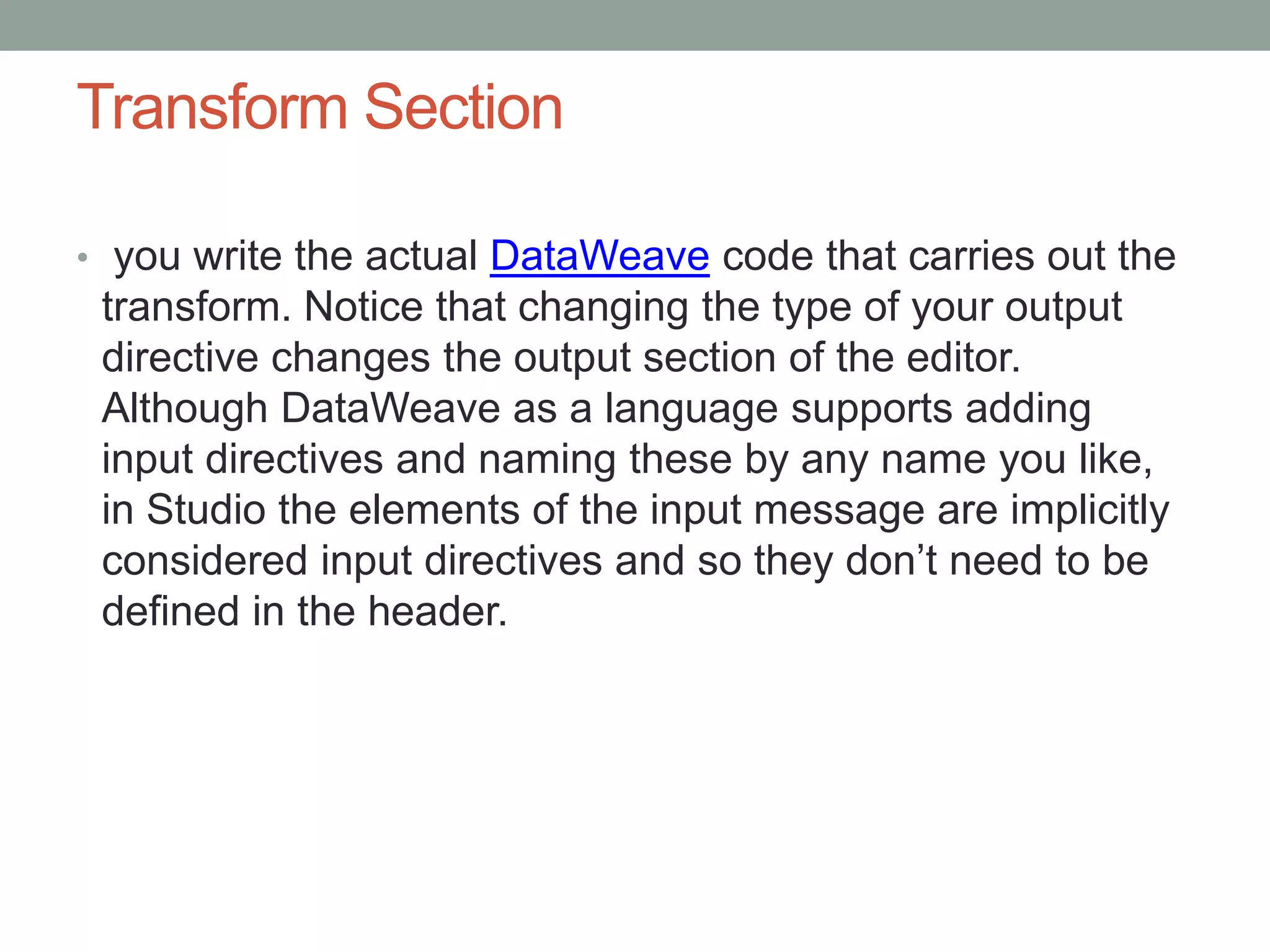
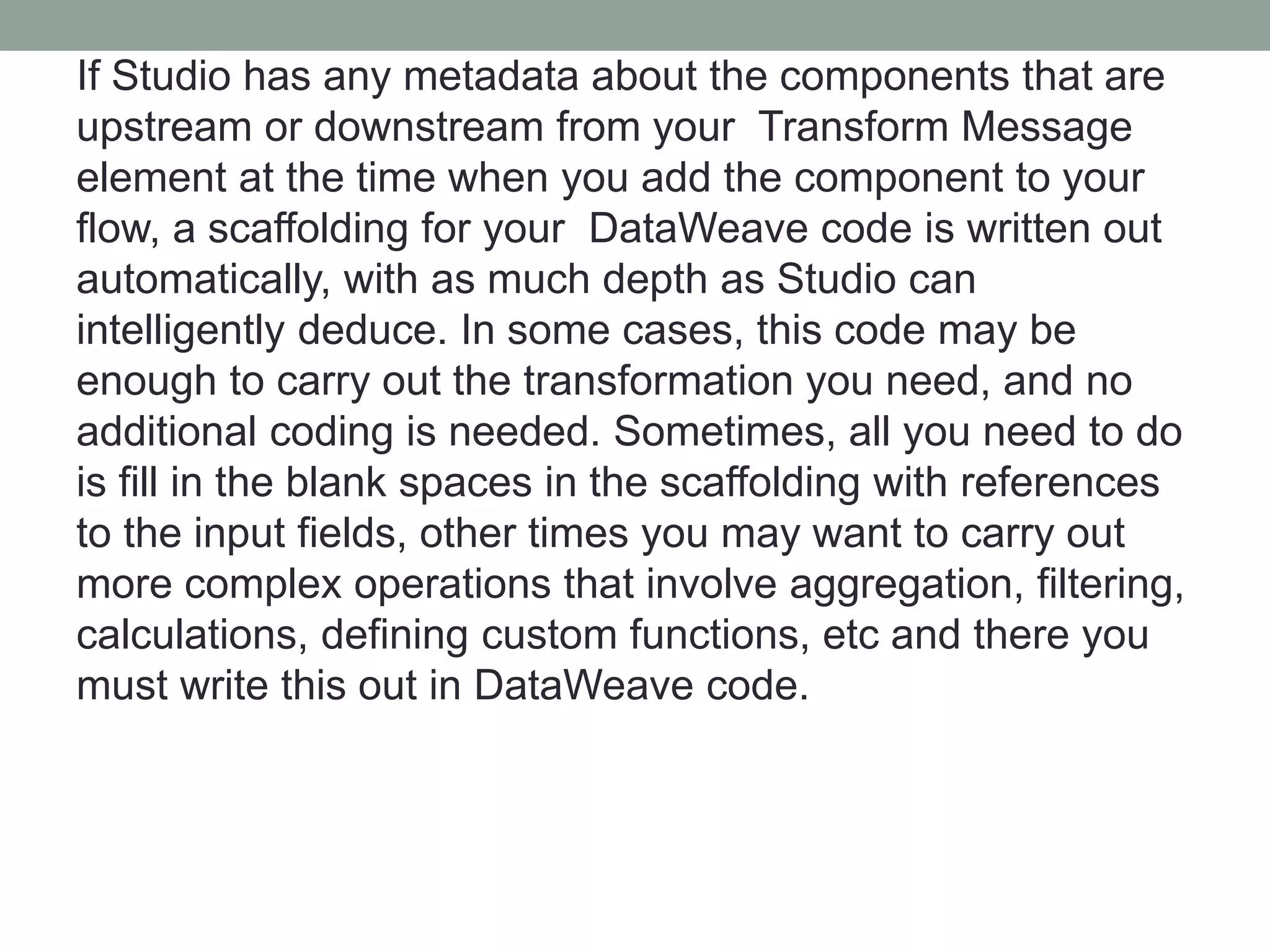

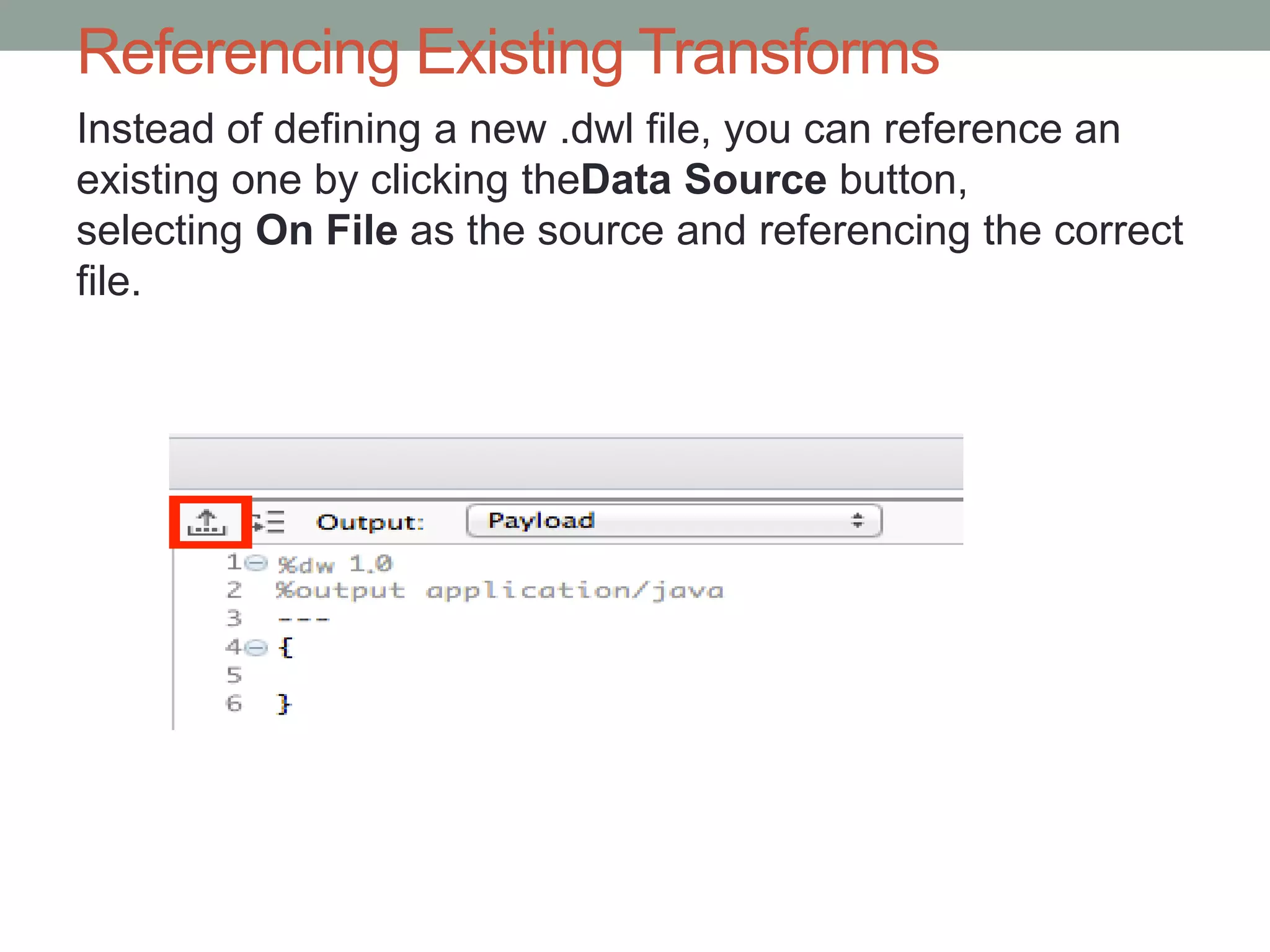
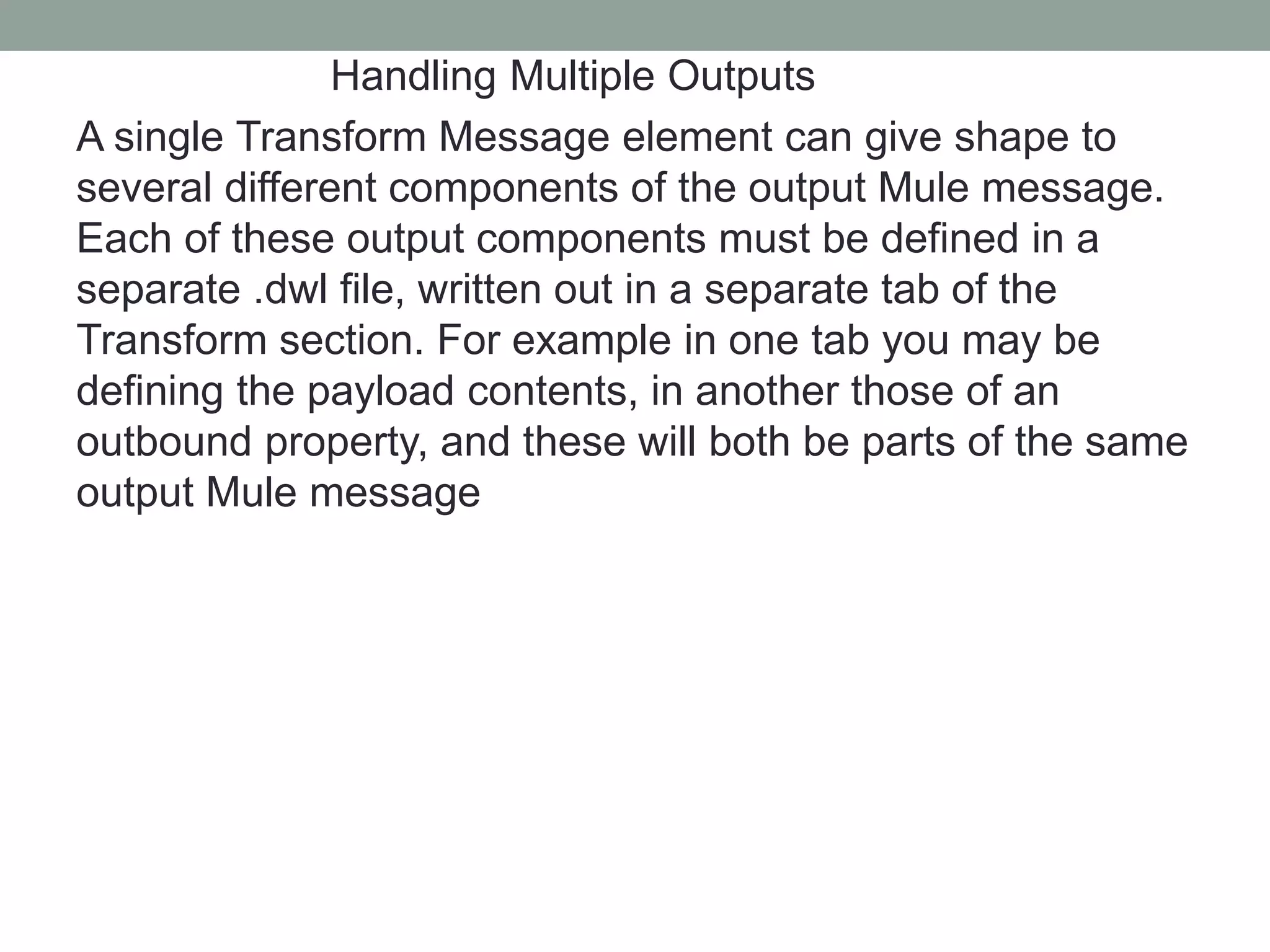
![To add a new output, click the Plus sign at the
bottom right of the section:new+output.png[image]
A new tab will then appear, there you can specify
where in the output Mule message to place the
output of this DataWeave transform. In case you’re
creating a new variable or property, you must also
set a name for it.](https://image.slidesharecdn.com/dataweave-151211161534/75/Data-weave-13-2048.jpg)
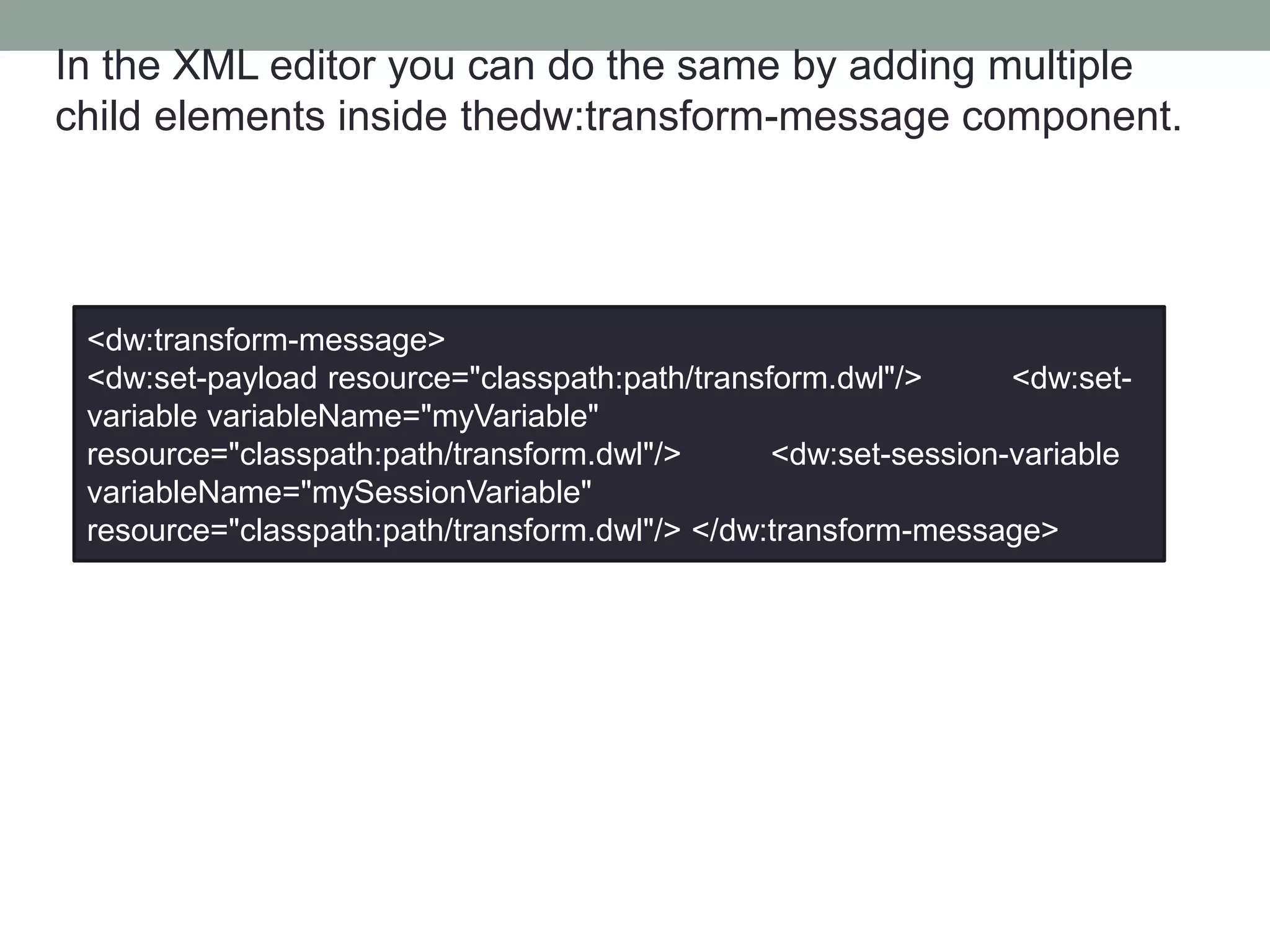
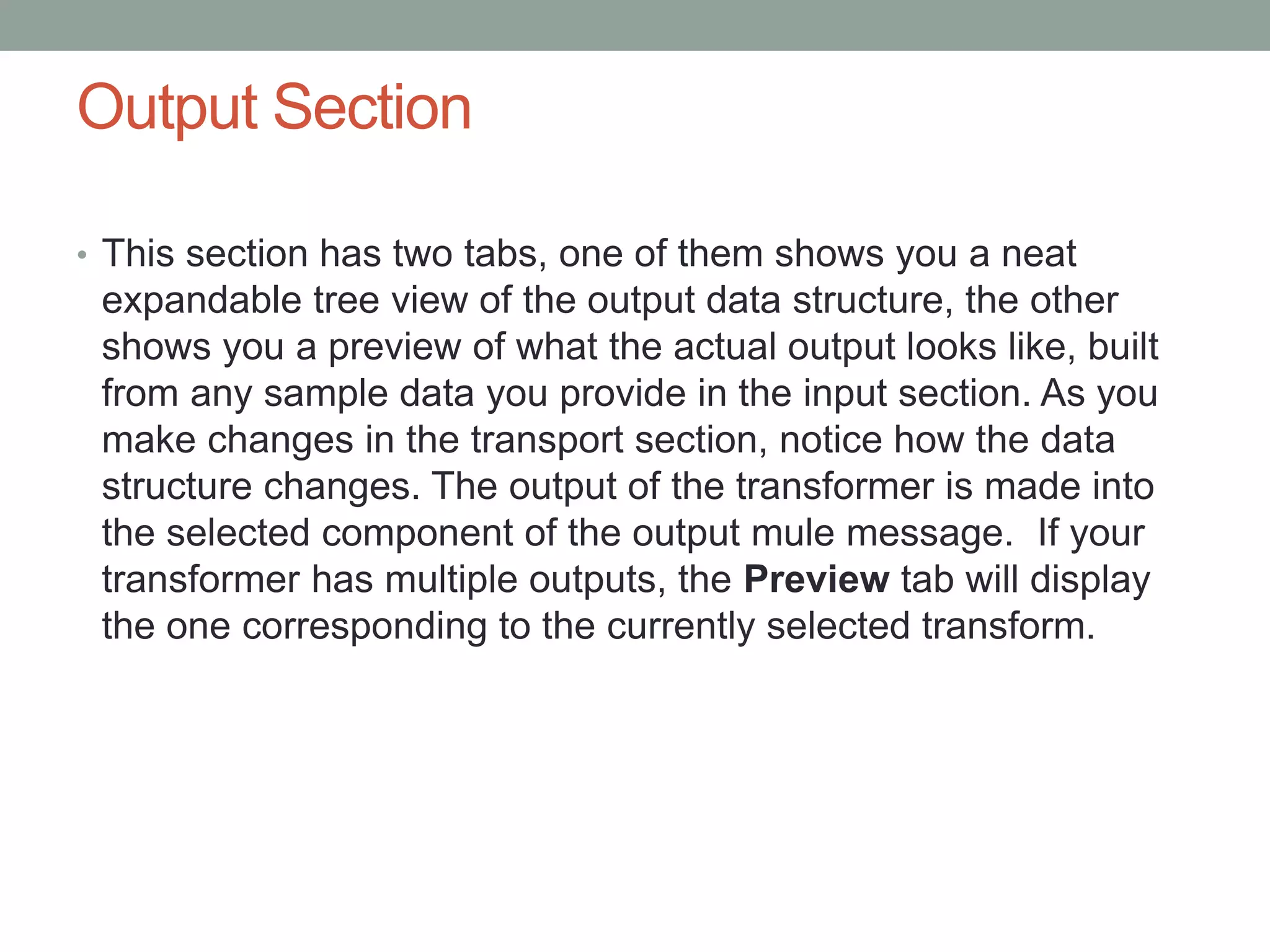
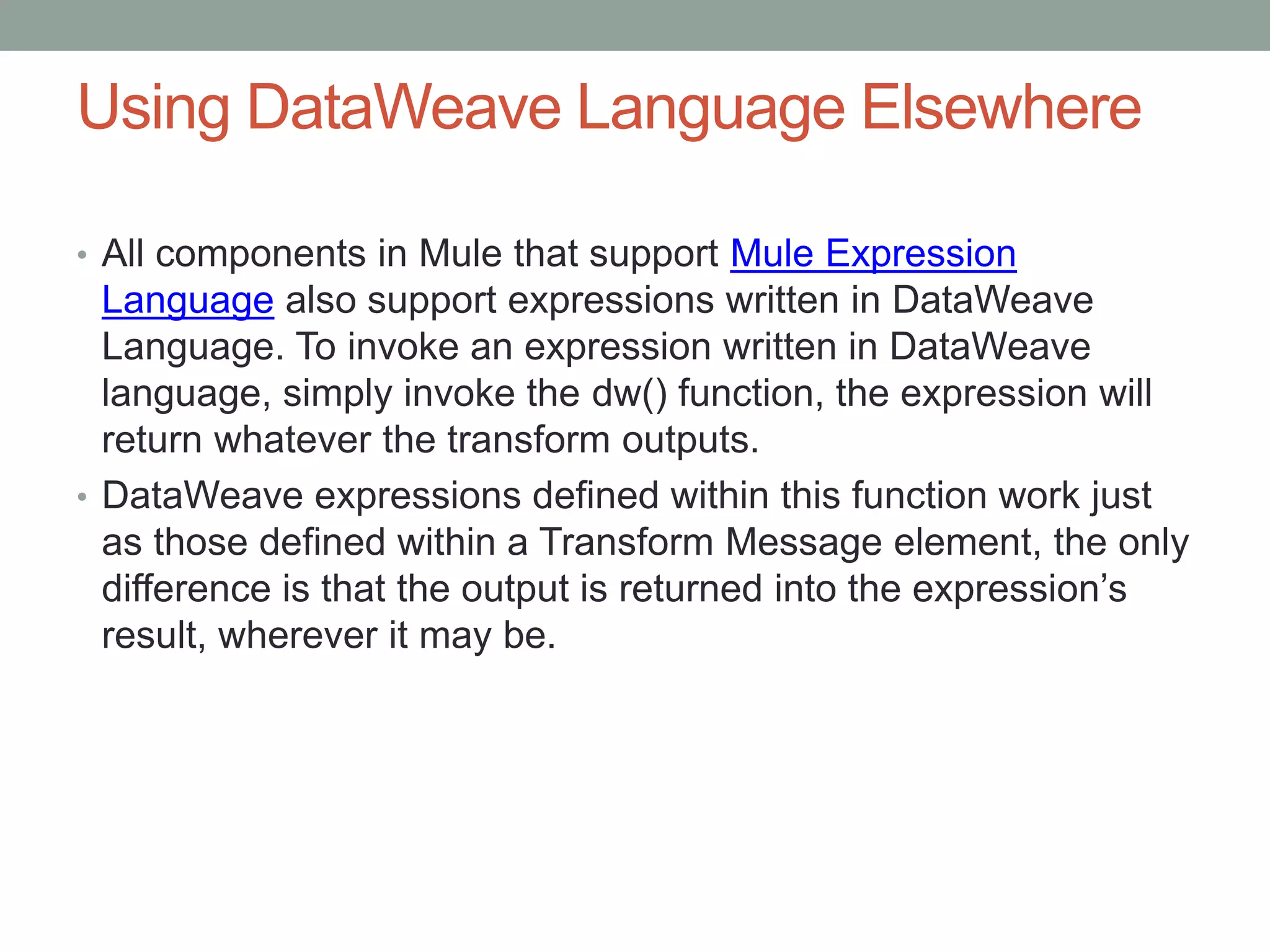
![• For example, you can define a custom object and
populate it with elements from the payload:
• That same expression could be added inside a Logger,
• within a MEL expression, to print out its result:
dw(myobject:{id:payload.accountid, user:payload.user})
#[`dw(myobject:{id:payload.accountid, user:payload.user})`]](https://image.slidesharecdn.com/dataweave-151211161534/75/Data-weave-17-2048.jpg)